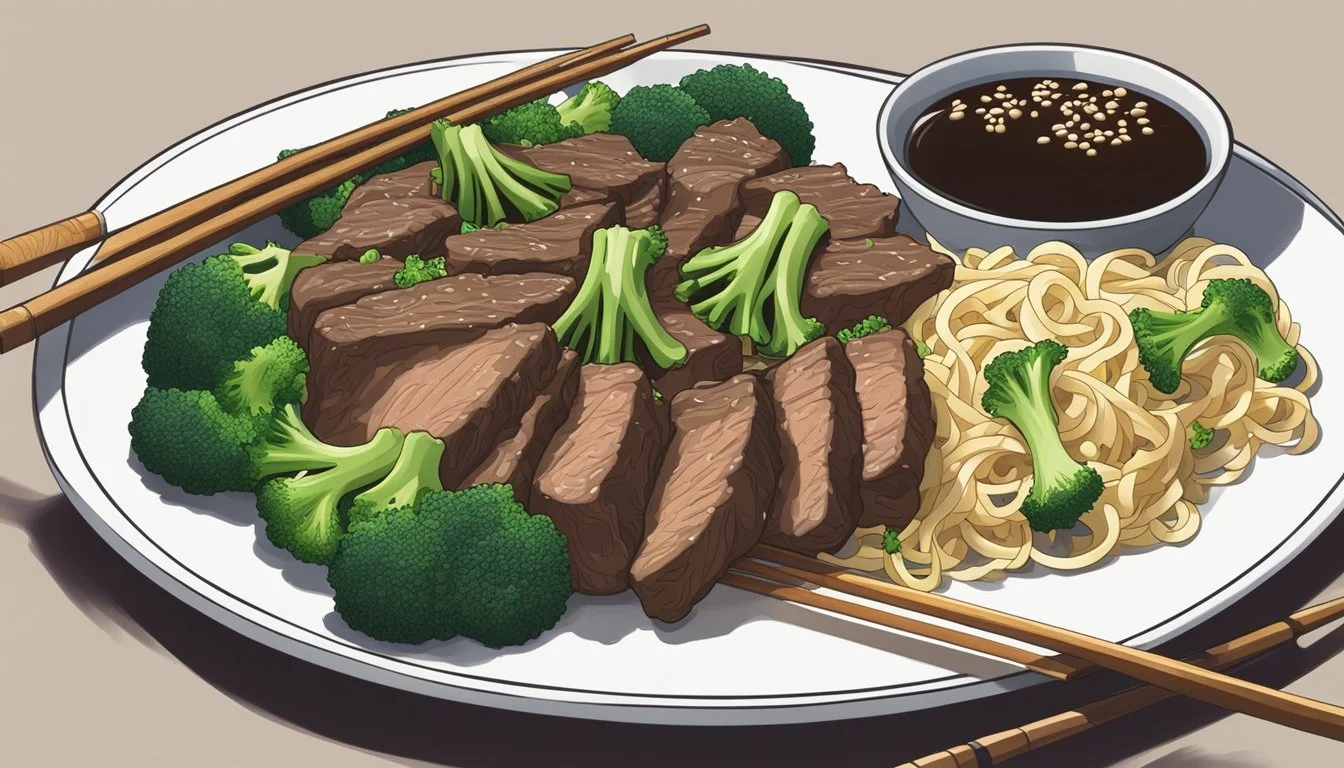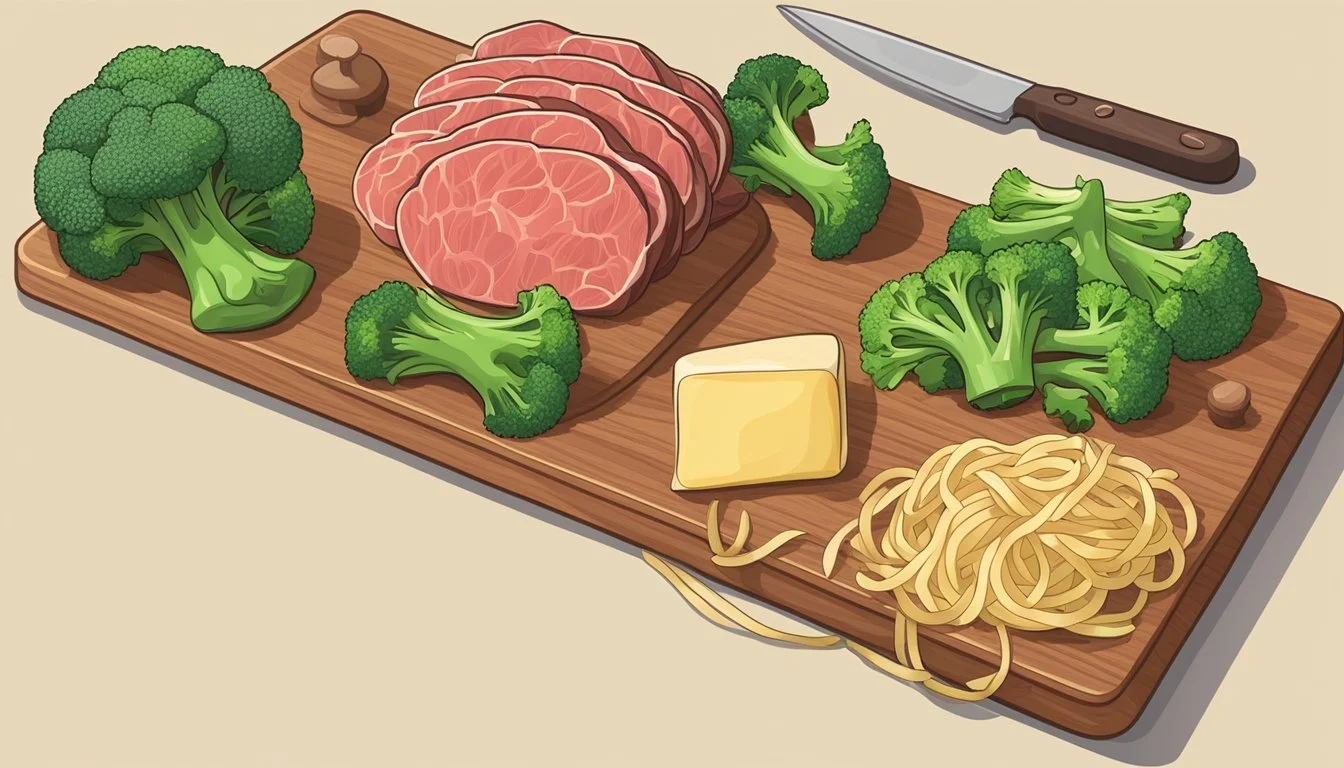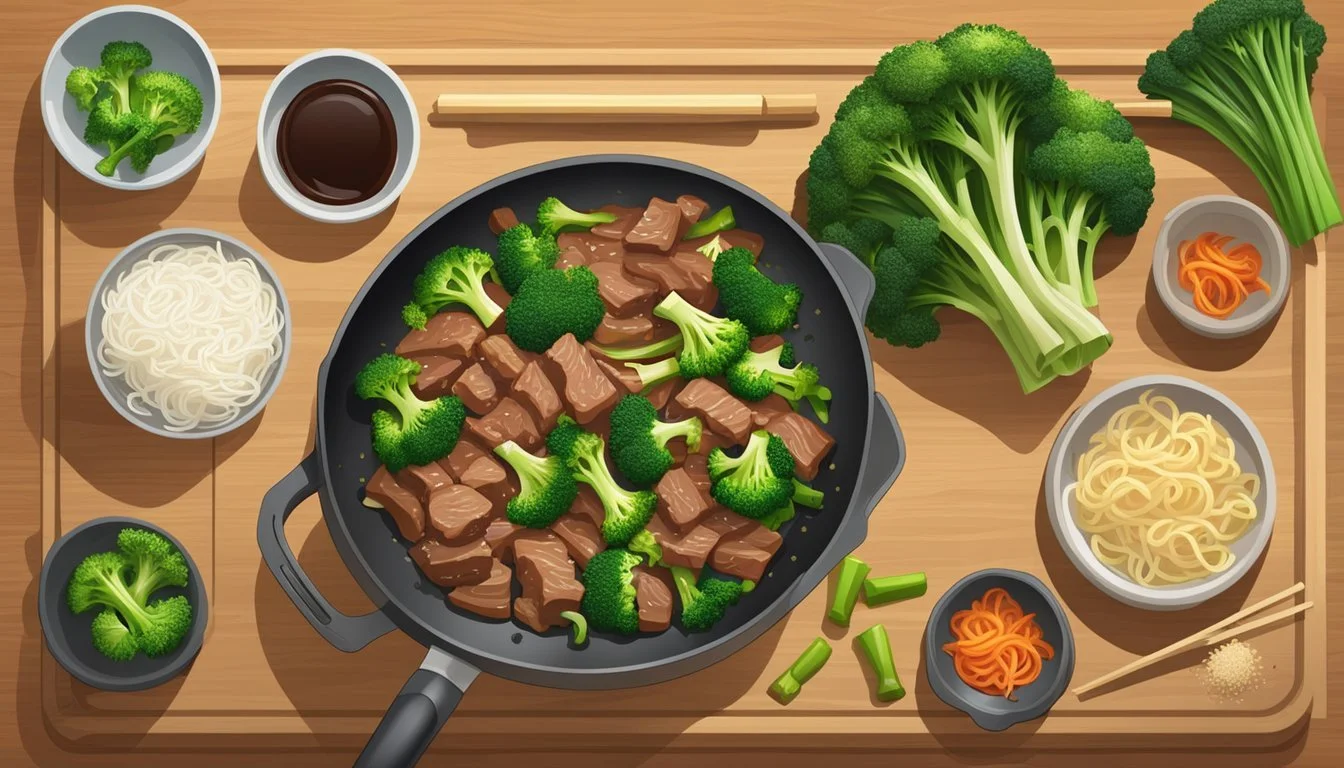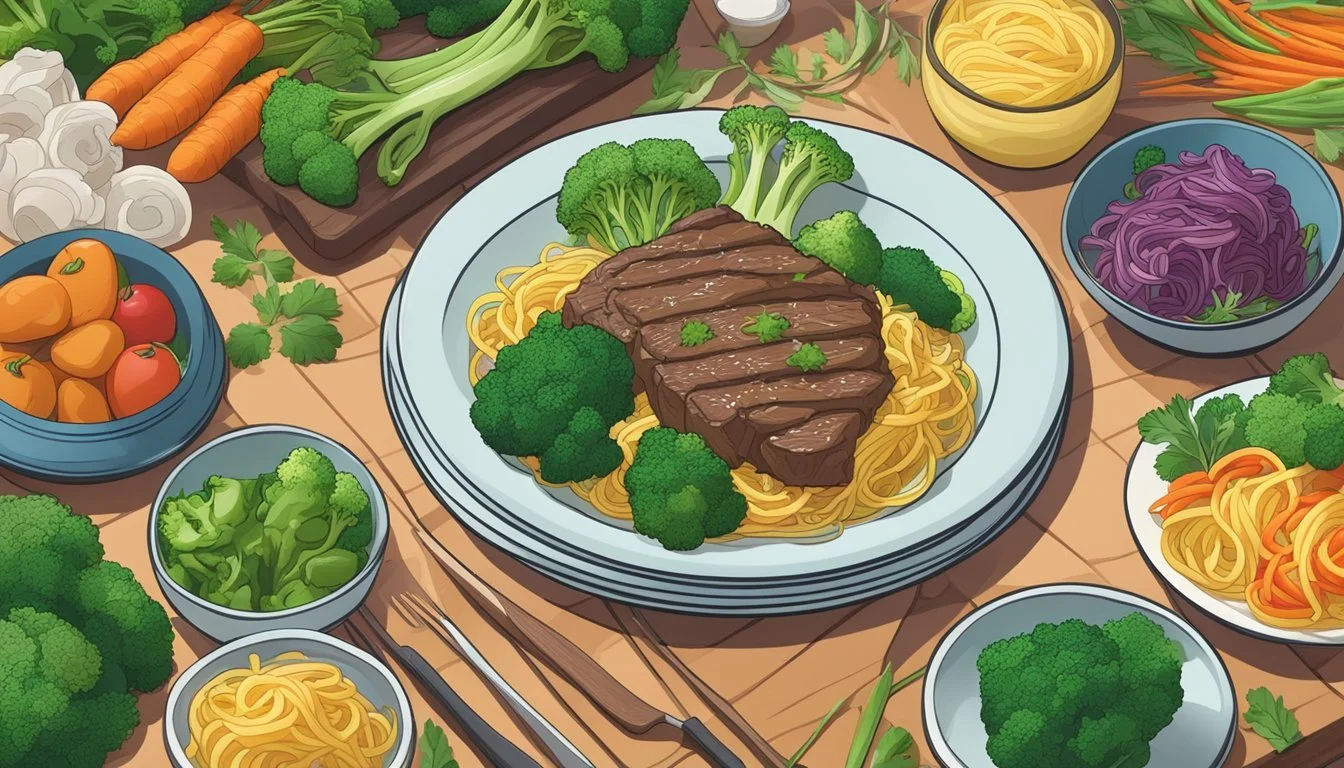How Long Does Beef and Broccoli with Noodles Last?
Storage Tips and Guidelines
For those who love a quick and delicious meal, beef and broccoli with noodles is a go-to dinner option. This savory dish typically lasts three to four days when stored properly in the refrigerator at or below 40°F. This timeframe ensures the ingredients maintain their flavor and safety. Crucial storage tips, such as using an airtight container, help preserve the dish's freshness.
Planning your meals can be challenging, especially when deciding how long leftovers are good for. Beef and broccoli with noodles is a versatile dinner, and knowing its shelf life helps in minimizing waste and maximizing meal prep. Keeping the dish properly stored prevents spoilage and helps retain its delightful taste.
Understanding the longevity of this popular dinner option can enhance your meal planning and reduce food waste. Whether preparing it for a week's worth of meals or simply saving leftovers for the next day, ensuring proper storage is key. This enables a stress-free dining experience and continued enjoyment of this savory meal.
Ingredients Breakdown
When making beef and broccoli with noodles, the quality of ingredients and their preparation significantly impact the dish's flavor and texture. The ingredients include beef, broccoli, noodles, and a variety of sauces and seasonings, each adding a distinct element to the meal.
Beef Quality and Selection
Selecting the right beef is crucial. Flank steak is often recommended as it is lean and cooks quickly. Ensure the beef is fresh and tender. Slicing the meat thinly against the grain helps in achieving a tender bite.
Marinating the beef with soy sauce, cornstarch, and vegetable oil can enhance its flavor and tenderness. Checking for any unpleasant odor or discoloration in the beef before cooking is essential.
Broccoli and Vegetable Preparation
The broccoli should be fresh and preferably organic. Look for firm stalks and bright green florets. Cutting the broccoli into uniform florets ensures even cooking.
Blanching the broccoli for 1-2 minutes retains its color and texture. Other complementary vegetables can include carrots and bok choy. These vegetables can provide added nutrition and variety.
Noodle Varieties and Selection
Noodle choice can alter the dish's texture and flavor profile.
Popular choices include:
Lo mein noodles
Ramen noodles
Udon noodles
Egg noodles
Rice noodles
Each type of noodle absorbs flavors differently. Cooking the noodles according to the package instructions and then mixing them with a bit of sesame oil prevents sticking.
Sauces and Seasonings
Sauces and seasonings define the dish’s savory profile.
Common ingredients include:
Soy sauce (light and dark)
Oyster sauce
Sesame oil
Garlic
Ginger
Sugar
Salt
Black pepper
Hoisin sauce
Sesame seeds
For added depth, some recipes also use mirin. Mixing these ingredients properly can create a balanced, flavorful sauce that coats both the beef and noodles evenly. Be precise with measurements to avoid overpowering the dish.
Preparation Techniques
When preparing beef and broccoli with noodles, there are several steps to ensure the dish is delicious and well-executed. These steps include cutting beef properly, blanching broccoli, mixing an ideal stir fry sauce, and cooking noodles to perfection.
Cutting Beef Against the Grain
Cutting beef against the grain is essential for tender results. This technique involves slicing perpendicular to the muscle fibers.
By doing so, shorter muscle fibers make the beef easier to chew and more tender. Using a sharp knife, look for the direction of the fibers and slice thinly, ideally about 1/4 inch thick. This method helps to preserve the texture, making the stir fry enjoyable.
Blanching Broccoli
Blanching broccoli before adding it to the stir fry ensures vibrant color and firm texture. Boil water in a large pot and add the broccoli florets.
Allow them to cook for 2-3 minutes until they are bright green and slightly tender. Immediately transfer the broccoli to an ice bath to stop the cooking process, preserving its crunch and color. Drain well before mixing with other ingredients.
Mixing the Stir Fry Sauce
A balanced stir fry sauce combines savory, sweet, and umami flavors. Common ingredients include soy sauce, sesame oil, ginger, garlic, water, cornstarch, and sugar.
Whisk these ingredients together until well combined. The cornstarch helps thicken the sauce, while the garlic and ginger add depth. Adjust the sweetness and saltiness to your preference, creating a perfect blend that complements both beef and broccoli.
Cooking Noodles to Perfection
Cooking noodles correctly ensures they integrate well with the stir fry. Boil water in a large pot and cook the noodles according to package instructions, typically 6-8 minutes, until they are al dente.
Drain the noodles and rinse with cold water to stop the cooking process and prevent sticking. Properly cooked noodles should be firm yet tender, ready to absorb the flavors of the sauce and mix evenly with the beef and broccoli.
Storing Beef and Broccoli Noodles
Beef and broccoli noodles make for a convenient weeknight dinner. Proper storage is critical to maintain their freshness and ensure they remain safe to eat.
Refrigeration Best Practices
After cooking, refrigerate beef and broccoli noodles within two hours to prevent bacteria growth. Use airtight containers to keep them crisp-tender. Refrigeration slows bacteria multiplication, keeping the dish safe for 3-4 days.
To maximize freshness, store in shallow containers, allowing for even cooling. Label containers with the date to track storage time. This method preserves flavor and maintains the healthiness of the meal.
Freezing and Thawing Methods
Freezing beef and broccoli noodles extends their shelf life. Before freezing, cool the dish completely to preserve texture and flavor. Store in Ziploc bags or airtight containers, removing as much air as possible.
For best results, freeze in portioned sizes. Thaw in the refrigerator overnight or use the defrost setting on your microwave. This ensures even thawing and preserves texture better than thawing at room temperature.
Shelf Life Expectancy
In the refrigerator, beef and broccoli noodles last up to four days, ensuring they remain safe and delicious. When frozen, the longevity increases to about three months.
Mark containers with both freezing and cooking dates. Regularly check for signs of spoilage before consumption, such as odd smells or changes in texture. Proper labeling helps track and maximize shelf life.
Safety Tips for Leftovers
When reheating, ensure beef and broccoli noodles reach an internal temperature of 165°F (74°C) to eliminate harmful bacteria. Stir the dish midway through heating to ensure even temperature distribution.
Reheat only the amount you plan to eat. Repeated reheating can degrade quality and increase health risks. Store any unused portions back in the refrigerator promptly, ensuring safety and taste are maintained.
Storing beef and broccoli noodles properly ensures a delicious and healthy meal option, maximizing convenience and minimizing waste.
Nutrition and Dietary Considerations
Beef and broccoli with noodles can be a nutritious meal, offering a balance of calories, protein, carbohydrates, and fats. Understanding its nutritional content helps in incorporating it into a balanced diet.
Caloric Content
The calorie count of beef and broccoli with noodles varies based on ingredients and portion size. A typical serving can range from 450 to 600 calories.
Ground beef or steak contributes significantly to the caloric content due to its fat content. Broccoli, being a low-calorie vegetable, adds minimal calories but boosts the nutrient profile with vitamins and fiber. The choice of noodles also impacts calories; whole-wheat or rice noodles may be slightly lower in calories compared to traditional egg noodles.
Typical Caloric Breakdown:
Beef: 200-300 calories
Noodles: 150-200 calories
Vegetables and sauce: 100-150 calories
Macronutrient Balance
This dish provides a balanced distribution of macronutrients.
Protein: Beef is the primary protein source, delivering about 20-25 grams per serving. Protein is essential for muscle repair and growth.
Carbohydrates: Noodles supply the bulk of carbohydrates, approximately 50-70 grams per serving. Carbohydrates are vital for energy, particularly for active individuals.
Fats: The fat content, driven by the beef and cooking oils, typically ranges from 15-25 grams. While fats contribute to calorie content, they are necessary for hormone production and vitamin absorption.
Adjusting the protein (lean beef), carbs (whole-wheat noodles or zoodles), and fats (minimal oil) can tailor the dish to specific dietary needs, ensuring it fits within a healthy eating plan.






